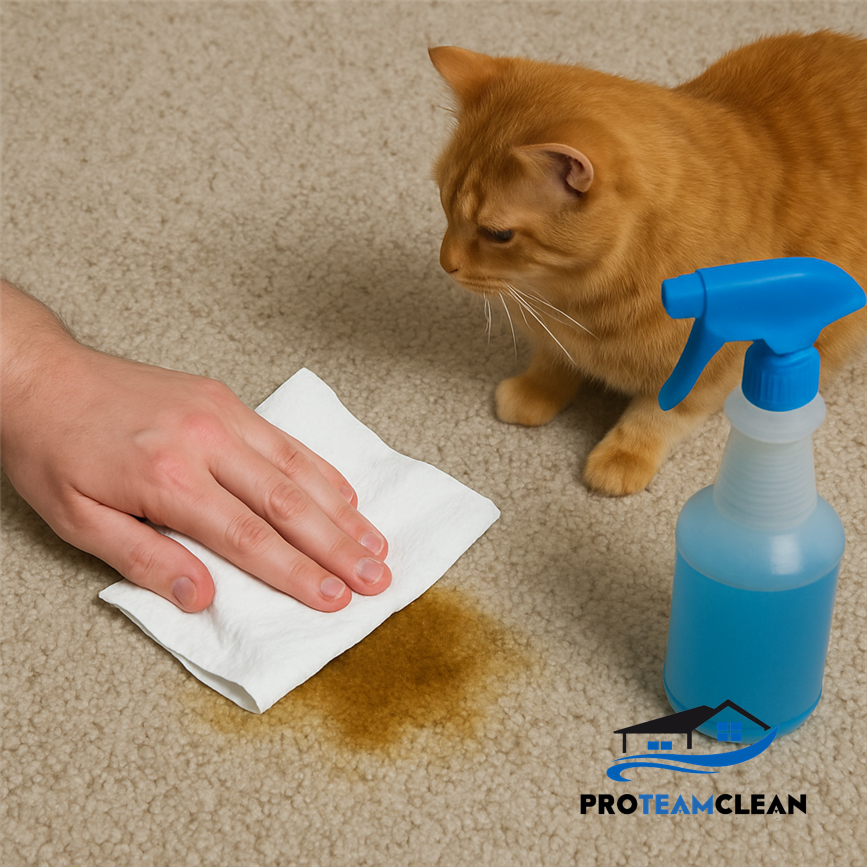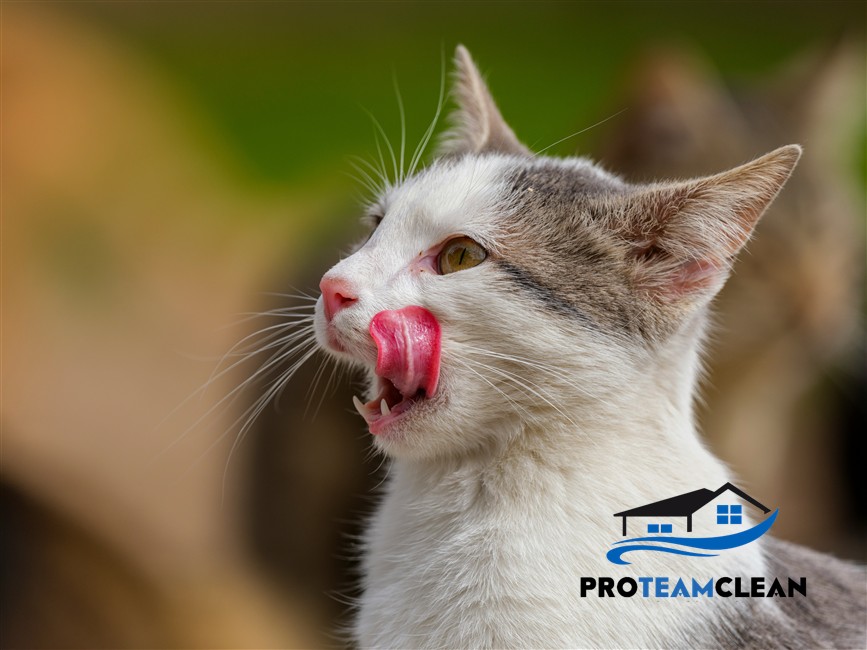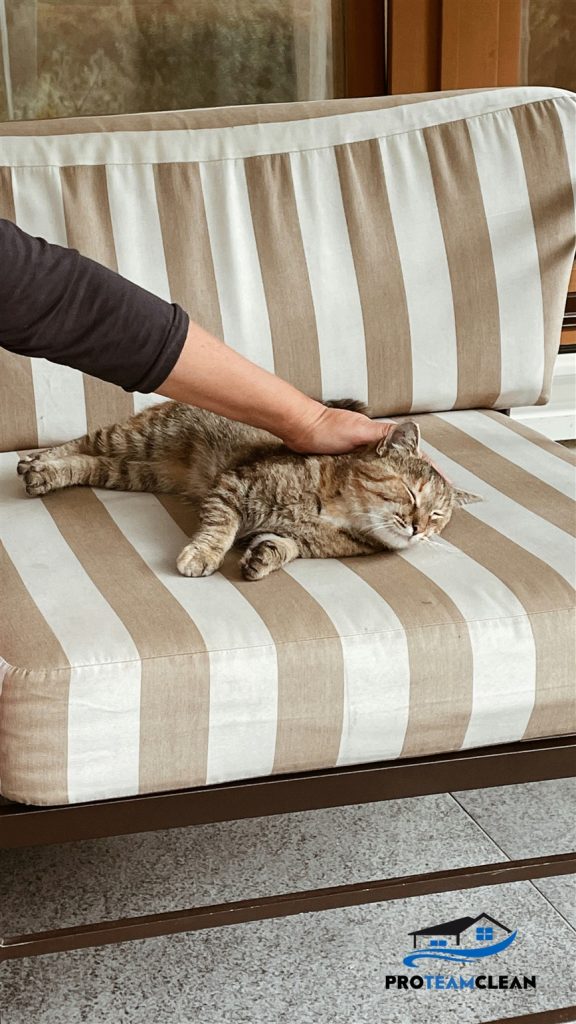Carpet Cleaning Sacramento | Carpet Cleaner Sacramento
- (916) 802-6022
- Everyday 9:00AM to 6:00PM
Cat pee odor can be a persistent problem for pet owners. It lingers in carpets, couches, and rugs, making homes smell unpleasant.
Many commercial cleaners contain harsh chemicals that may not be safe for pets or the environment.
Natural remedies offer a safer, effective alternative for removing cat urine smell. They are often more affordable and eco-friendly.
In this guide, we’ll explore various natural methods to tackle cat pee odor. You’ll learn how to clean and deodorize different surfaces in your home.
Say goodbye to stubborn cat pee smells with these simple, natural solutions.
Why Cat Pee Smell Is So Hard to Remove
Cat urine contains uric acid, a compound that sticks to surfaces. This acid forms crystals, which can last for years if not treated correctly.
These crystals release ammonia, which contributes to the strong urine odor.
Common cleaning methods can’t neutralize uric acid effectively, making cat pee particularly challenging to eliminate.
Here’s why cat pee odor is stubborn:
- Uric acid crystals are resistant to many cleaners.
- Ammonia in urine interacts with moisture in the air.
- Odor intensifies when it lingers on surfaces.

Cat pee’s resilience can frustrate even seasoned pet owners. Understanding its chemistry is the first step toward effective odor removal. This knowledge helps in choosing the right natural remedies.
Immediate Steps: What to Do When You Find Cat Pee
Finding cat pee on your carpet or couch can be stressful. Acting quickly can prevent the odor from setting in deeply. Here’s what to do right away:
Start by blotting the fresh urine with paper towels. Press down gently to absorb as much liquid as possible. This will help prevent the stain from spreading.
Next, rinse the area with cold water to dilute the urine. Pour a small amount, then blot again to absorb excess moisture. Cold water keeps the urine from binding to fibers.
Here’s a quick list of immediate steps:
- Blot urine with paper towels.
- Rinse with cold water.
- Blot again until mostly dry.
These immediate actions can make a big difference. The quicker you respond, the easier it becomes to remove the smell.
The Best Natural Remedies for Cat Pee Odor Removal
Dealing with cat pee odor can be challenging. Luckily, natural remedies can provide effective solutions without harsh chemicals. These methods are not only pet-safe but also eco-friendly.
Vinegar and baking soda are common household items that work wonders. They neutralize the alkaline salts in cat urine and absorb odors.
This method is particularly useful on various surfaces.
Hydrogen peroxide and dish soap offer another effective combination. The bubbly reaction helps lift stains and break down urine crystals.
This method is great for tougher, stubborn stains.
Other natural options include activated charcoal and citrus peels. Charcoal absorbs odors, while citrus provides a fresh scent.
These can be used as supplementary measures around the home.
List of the best natural remedies:
- Vinegar and baking soda
- Hydrogen peroxide and dish soap
- Activated charcoal and citrus peels

These solutions can help keep your home fresh and clean, naturally.
Vinegar and Baking Soda Method
This method is simple and powerful for removing cat pee odors. Vinegar’s acidity neutralizes odors, while baking soda absorbs them.
Here’s how you can use this method effectively.
First, sprinkle baking soda over the affected area. Let it sit for a few minutes to start absorbing the odor. Then, mix vinegar with a little water and spray over the baking soda.
The mixture will bubble as it breaks down the urine. Once the fizzing stops, blot up the mixture with a clean cloth. This removes the remnants of urine and neutralizes the smell.
Steps to use vinegar and baking soda:
- Sprinkle baking soda on the area.
- Spray with vinegar and water mixture.
- Blot up the mixture thoroughly.
This solution is cost-effective and can be used regularly.
Hydrogen Peroxide and Dish Soap Solution
Hydrogen peroxide and dish soap are another potent duo. They work well for stubborn and set-in stains. This method requires some precaution, but it is safe when used correctly.
Mix hydrogen peroxide with a little dish soap in a spray bottle. Apply it directly to the stained area. Allow the solution to sit for a few minutes to break down the stain.
Next, blot and rinse the area with water. Ensure all soap residue is removed. This method can sometimes bleach fabrics, so test on a small area first.
Steps for this method:
- Mix hydrogen peroxide and dish soap.
- Apply to the stain.
- Rinse and blot the area well.
This technique is perfect for tough stains but test it first to avoid any discoloration.
Activated Charcoal and Citrus Peels
Activated charcoal is an excellent odor absorber. Pairing it with citrus peels can enhance the fresh scent in your home. These ingredients work subtly but effectively.
Place activated charcoal near the affected areas. It will absorb lingering odors over time. You can also scatter dried citrus peels around to add a natural, pleasant aroma.
These materials can be placed in small bowls or sachets. They work well in closets or under furniture.
Ways to use charcoal and citrus peels:
- Place charcoal in bowls or sachets.
- Scatter citrus peels near problem areas.
These natural remedies are safe, easy, and add a fresh smell.
Essential Oils: Use With Caution
Essential oils like lavender can be beneficial for odor removal. However, they must be used with care around pets. Oils offer antibacterial properties and introduce a nice scent.
Add a few drops to a spray bottle filled with water. Mist around the room or on furniture, avoiding direct contact with cats. Ensure ventilation to disperse strong aromas.
Some oils can be harmful to pets if used excessively. Always research their effects and opt for pet-safe options.
Using essential oils safely:
- Add drops to a water spray bottle.
- Avoid spraying directly on or near pets.
Essential oils can mask odors while adding a soothing atmosphere to your home.
How to Remove Cat Urine Smell from Carpet and Rugs
Carpet and rugs are magnets for cat pee odors. It’s crucial to act swiftly when accidents happen to prevent lasting smells.
Begin by blotting up as much urine as possible with a towel. Avoid scrubbing, as that pushes the stain deeper into the fibers.
Next, prepare a cleaning solution of vinegar and water. Apply it generously over the stain, allowing it to seep into the carpet.
This neutralizes odors and helps lift the stain from fibers.
After the vinegar treatment, sprinkle baking soda onto the area. Baking soda absorbs residual smells and moisture.
Let it sit until fully dry, then vacuum the area thoroughly to remove the powder.
Key steps to clean cat urine from carpets:
- Blot the stain with a towel.
- Apply vinegar and water solution.
- Sprinkle baking soda, then vacuum.
This technique is effective, but persistent odors may require multiple applications.
How to Get Cat Urine Smell Out of Couches and Upholstery
Couches and upholstery can trap cat pee odors deep within the fabric. Start by blotting the urine with a clean cloth. Avoid pressing too hard to prevent spreading the stain.
Mix a solution of hydrogen peroxide, dish soap, and water. Gently dab this mixture onto the affected area. Let it sit for a few minutes, then blot again with a damp cloth.
For an extra odor-fighting boost, sprinkle baking soda over the area and let it dry completely. Vacuum the surface to remove any residue.
Steps to remove urine smell from upholstery:
- Blot urine with a cloth.
- Dab with hydrogen peroxide mix.
- Sprinkle and vacuum baking soda.

For persistent odors, several applications may be necessary. Always test solutions on a hidden area first.
Dealing with Old or Stubborn Cat Pee Odors
Preventing cat pee odor begins with consistent litter box maintenance. Clean the box regularly to encourage usage. Fresh litter can make all the difference.
Understanding your cat’s behavior is crucial. Recognize signs of stress or health issues. These can lead to urination outside the box.
Consider these strategies to prevent odors:
- Clean the litter box daily.
- Monitor your cat’s health.
- Ensure a stress-free environment.
A calm, clean space reduces accidents. This keeps your home fresh and pleasant.
When to Call a Professional Cleaner
Sometimes, natural remedies may fall short. If odors persist despite your efforts, it might be time for professional help. Professionals have access to industrial-grade cleaning tools.
Severe odors or old stains can be tough to handle alone. Professional cleaners can reach deep into carpets and upholstery, ensuring a thorough removal.
This provides peace of mind and a fresher home environment.
Frequently Asked Questions About Cat Pee Odor Removal
Many pet owners have questions about cat pee odor issues. One common query is about the effectiveness of natural remedies.
Natural solutions often work well for fresh stains.
Another frequent question involves safety. People wonder if these remedies are safe for pets and kids. Most natural solutions are safe if used correctly.
Timing is another concern. Some ask how soon they should act after discovering an accident. Immediate action usually yields the best results.
Common Questions:
- Are natural remedies safe for my pets?
- How effective are these treatments?
- Can I use multiple methods together?
- What is the best time to clean up?
Conclusion: Fresh, Clean, and Cat-Friendly Homes
Keeping your home fresh and free of cat pee odor requires effort and care. By using natural remedies, you can tackle odors safely and effectively.
Remember, understanding your cat’s behavior can prevent future accidents.
With the right approach, your home can be both clean and inviting, ensuring a pleasant environment for everyone.





